Luca Lugini
Discussion Tracker: Supporting Teacher Learning about Students' Collaborative Argumentation in High School Classrooms
Feb 20, 2021
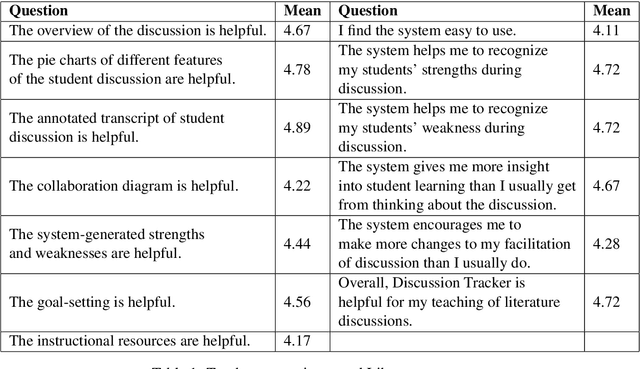
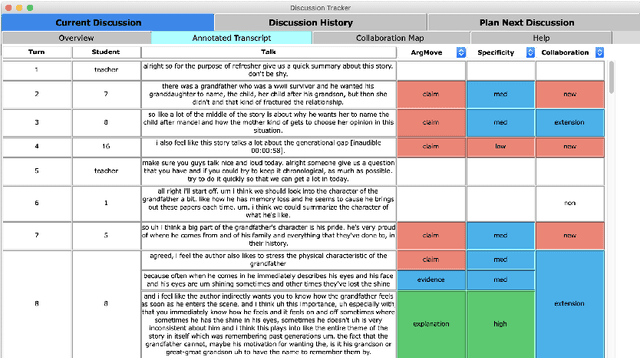
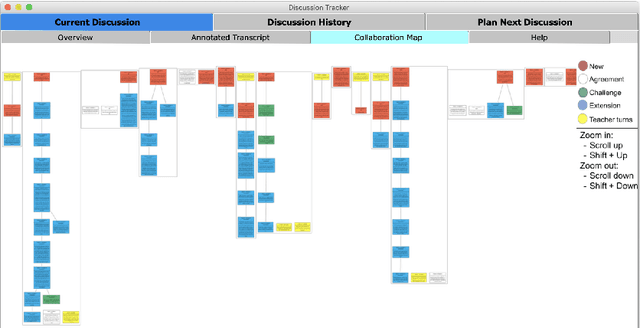
Abstract:Teaching collaborative argumentation is an advanced skill that many K-12 teachers struggle to develop. To address this, we have developed Discussion Tracker, a classroom discussion analytics system based on novel algorithms for classifying argument moves, specificity, and collaboration. Results from a classroom deployment indicate that teachers found the analytics useful, and that the underlying classifiers perform with moderate to substantial agreement with humans.
Contextual Argument Component Classification for Class Discussions
Feb 20, 2021


Abstract:Argument mining systems often consider contextual information, i.e. information outside of an argumentative discourse unit, when trained to accomplish tasks such as argument component identification, classification, and relation extraction. However, prior work has not carefully analyzed the utility of different contextual properties in context-aware models. In this work, we show how two different types of contextual information, local discourse context and speaker context, can be incorporated into a computational model for classifying argument components in multi-party classroom discussions. We find that both context types can improve performance, although the improvements are dependent on context size and position.
The Discussion Tracker Corpus of Collaborative Argumentation
May 22, 2020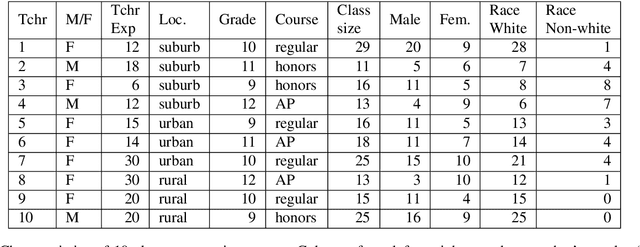
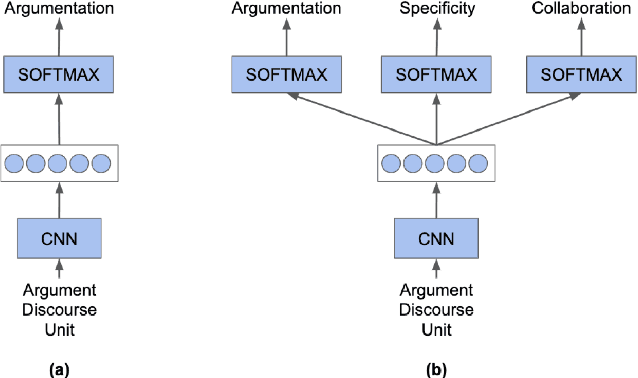

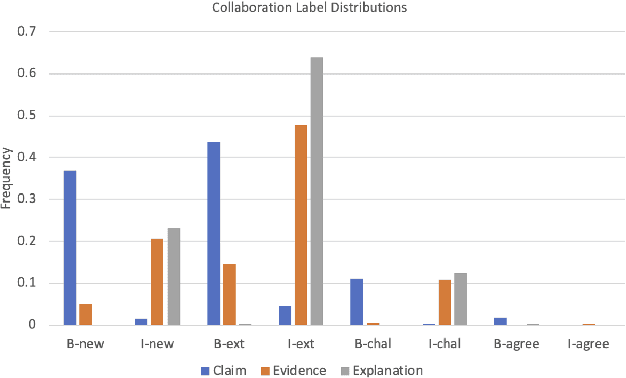
Abstract:Although Natural Language Processing (NLP) research on argument mining has advanced considerably in recent years, most studies draw on corpora of asynchronous and written texts, often produced by individuals. Few published corpora of synchronous, multi-party argumentation are available. The Discussion Tracker corpus, collected in American high school English classes, is an annotated dataset of transcripts of spoken, multi-party argumentation. The corpus consists of 29 multi-party discussions of English literature transcribed from 985 minutes of audio. The transcripts were annotated for three dimensions of collaborative argumentation: argument moves (claims, evidence, and explanations), specificity (low, medium, high) and collaboration (e.g., extensions of and disagreements about others' ideas). In addition to providing descriptive statistics on the corpus, we provide performance benchmarks and associated code for predicting each dimension separately, illustrate the use of the multiple annotations in the corpus to improve performance via multi-task learning, and finally discuss other ways the corpus might be used to further NLP research.
Annotating Student Talk in Text-based Classroom Discussions
Sep 06, 2019


Abstract:Classroom discussions in English Language Arts have a positive effect on students' reading, writing and reasoning skills. Although prior work has largely focused on teacher talk and student-teacher interactions, we focus on three theoretically-motivated aspects of high-quality student talk: argumentation, specificity, and knowledge domain. We introduce an annotation scheme, then show that the scheme can be used to produce reliable annotations and that the annotations are predictive of discussion quality. We also highlight opportunities provided by our scheme for education and natural language processing research.
Argument Component Classification for Classroom Discussions
Sep 06, 2019



Abstract:This paper focuses on argument component classification for transcribed spoken classroom discussions, with the goal of automatically classifying student utterances into claims, evidence, and warrants. We show that an existing method for argument component classification developed for another educationally-oriented domain performs poorly on our dataset. We then show that feature sets from prior work on argument mining for student essays and online dialogues can be used to improve performance considerably. We also provide a comparison between convolutional neural networks and recurrent neural networks when trained under different conditions to classify argument components in classroom discussions. While neural network models are not always able to outperform a logistic regression model, we were able to gain some useful insights: convolutional networks are more robust than recurrent networks both at the character and at the word level, and specificity information can help boost performance in multi-task training.
Predicting Specificity in Classroom Discussion
Sep 03, 2019



Abstract:High quality classroom discussion is important to student development, enhancing abilities to express claims, reason about other students' claims, and retain information for longer periods of time. Previous small-scale studies have shown that one indicator of classroom discussion quality is specificity. In this paper we tackle the problem of predicting specificity for classroom discussions. We propose several methods and feature sets capable of outperforming the state of the art in specificity prediction. Additionally, we provide a set of meaningful, interpretable features that can be used to analyze classroom discussions at a pedagogical level.
 Add to Chrome
Add to Chrome Add to Firefox
Add to Firefox Add to Edge
Add to Edge